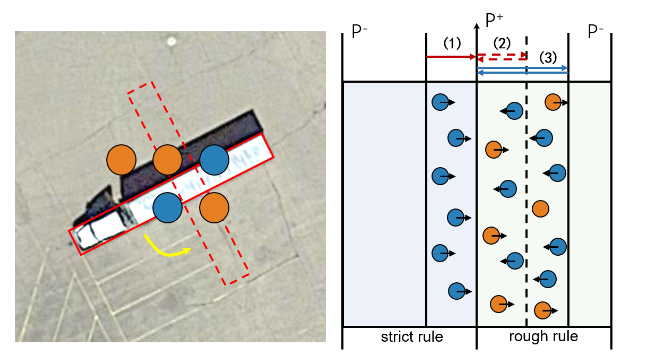个人信息Personal information
- 博士生导师
- 硕士生导师
- 教师拼音名称:Xiao Zhifeng
- 电子邮箱:
- 所在单位:测绘遥感信息工程全国重点实验室
- 性别:男
- 职称:教授
- 学科:
计算机应用技术
地图制图学与地理信息工程
地图学与地理信息系统
摄影测量与遥感
联系方式Contact information
邮箱:
最新动态
王凯博士论文《Learnable Loss Balancing in Anchor-free Oriented Detectors for Aerial Object》发表在一区顶级SCI期刊 IEEE Transactions on Geoscience and Remote Sensing
发布时间:2023-04-17 点击次数:
论文针对当前目标检测研究的正负样本定义问题,提出了一种分类和框回归协同动态收敛策略,实验表明该方法可大幅提升目标检测性能。
Oriented object detection plays an important role in aerial image interpretation. Image processing speed is also essential due to massive amounts of aerial images. Anchor-free oriented detectors with fast processing speed are generally accepted despite the absence of pre-set anchors, contributing to their performance gap with anchor-based detectors. Most anchor-free oriented detectors are carefully designed by defining samples according to target characteristics, which require substantial prior knowledge, to realize improved performance. This study proposes an anchor-free oriented detector (termed as rfpoint) that requires minimal prior knowledge. Moreover, this study mainly aims to introduce a dynamic sample definition strategy. This strategy is modeled as a dynamic regulating process, wherein the classification and box regression interact until the model converges. A rotating quality-driven loss (RQDL) and adaptive-weight box loss (AWBL) are also proposed to realize the aforementioned process. RQDL redefines positive and negative attributes of samples according to the distribution of rotating Intersection-over-Unit (IoU) between predictions and ground truth. AWBL adjusts the importance degree of candidate samples in the box regression through classification scores. The proposed method is then tested on three mainstream aerial image datasets (DOTA, DIOR, and HRSC2016). Results reveal that the proposed method achieves the best performance compared with other oriented detectors, whose mAP are 79.92%, 70.88%, and 90.67%. Moreover, the method maintains the inference speed advantage of anchor-free detectors. An effective sample definition method can bridge the performance gap of anchor-free oriented detectors without minimizing inference speed.




